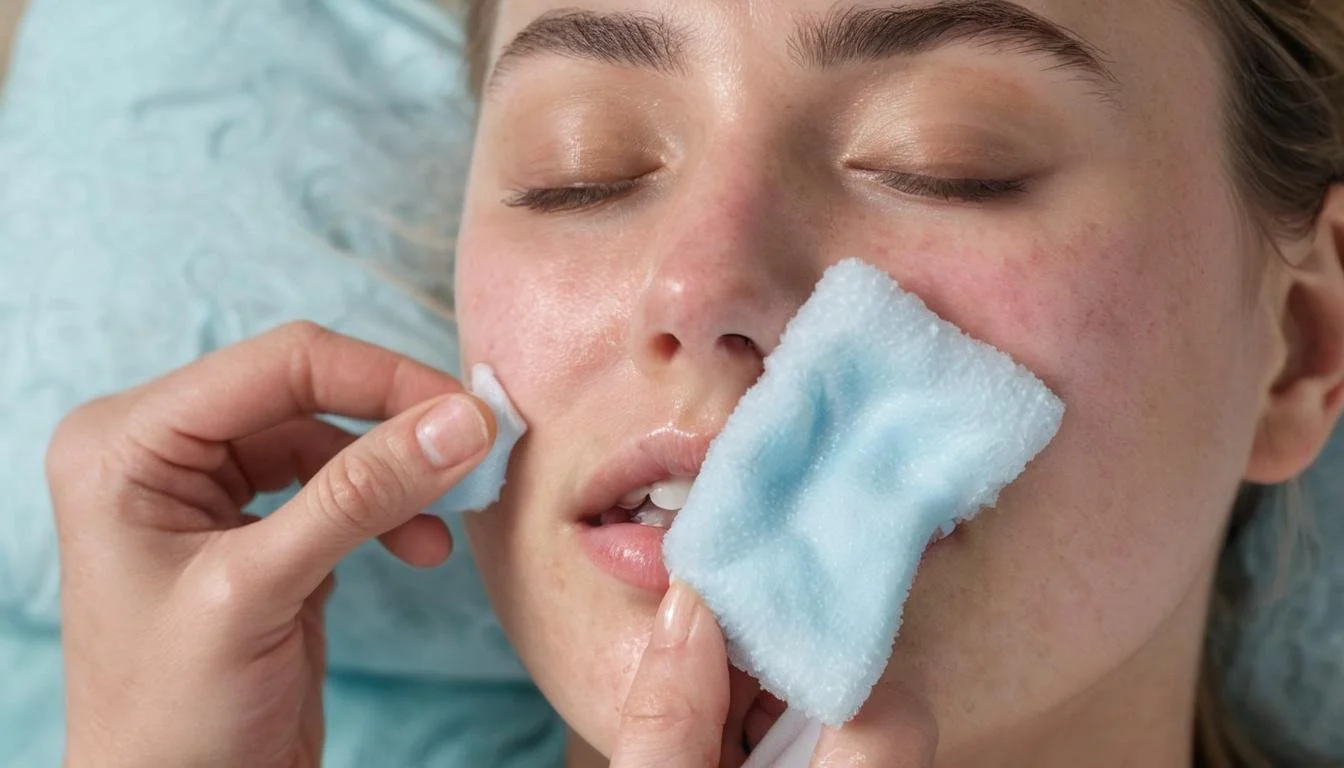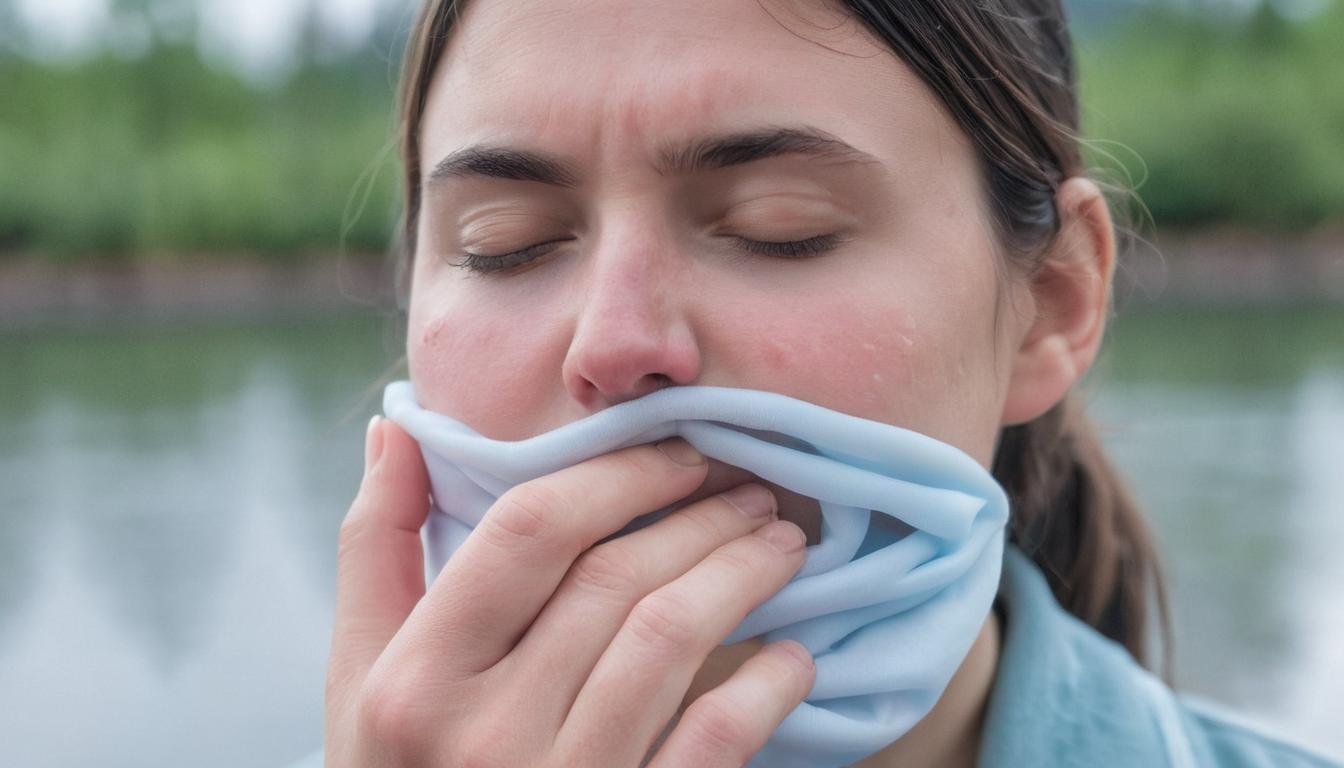How to Reduce Swelling After Wisdom Teeth Removal: Effective Tips and Remedies
Facing the swelling and discomfort following wisdom teeth removal is something many of us can relate to. It’s that persistent puffiness and aching pain which makes even the simplest tasks seem daunting. Whether you're finding it hard to eat solid foods without wincing or struggling to get a good night’s sleep, this article will arm you with trustworthy tips to ease your recovery swiftly.
To reduce swelling after wisdom teeth removal, apply a cold compress to the affected area and elevate your head while resting. Additionally, follow post-operative instructions from your dentist, rinse your mouth with warm saltwater, and consume cold or soft foods that require minimal chewing.
Recommended Foods for Fast Recovery
The recovery journey after wisdom teeth removal doesn't have to be miserable, especially in terms of food choices. When your mouth is sore and swollen, eating can be quite a challenge. This is where soft and cold foods become your best friends. They are gentle on the extraction site, easy to consume, and can help alleviate discomfort and minimize swelling.
Soft and Cold Favorites
Let's start with smoothies. Packed with essential nutrients, their smooth texture makes it effortless to swallow without much chewing. You can customize them with berries, bananas, or spinach for added nutritional value. Plus, the cold temperature provides soothing relief to any discomfort.
Next up, we have yogurt – an excellent option following wisdom teeth removal. It's soft on the gums and provides probiotics that support digestive health. The coolness of the yogurt can also offer relief from any soreness.
Another comforting choice is mashed potatoes. Soft and easy to consume without requiring extensive chewing, mashed potatoes are a go-to option for many individuals during their recovery period. They provide a sense of comfort while being gentle on the extraction sites.
And who can forget ice cream? It not only provides a delightful indulgence but also delivers cold relief that can soothe any irritation or discomfort in the mouth. Opt for flavors that aren't too intense to avoid any sensitivity.
Nutritious Options
While it's important to focus on soft and cold foods, incorporating nutritious options into your diet is equally vital for a swift recovery.
Broths and soups are ideal choices as they are warm (not hot), nutrient-rich, and easily digestible. They provide valuable hydration while offering nourishment in a soothing form.
For those seeking protein-rich options, scrambled eggs fit the bill perfectly. Their soft texture makes them gentle on the gums while providing essential nutrients for recovery.
Another nutritious yet soft option is apple sauce. It's an easy snack choice that offers both nourishment and comfort during the recovery phase.
By focusing on these soft and nutritious food options, you'll not only ease the process of eating but also ensure that your body receives the essential nutrients needed for healing. This combination of comfort and nutrition will aid in your journey towards a fast and smooth recovery after wisdom teeth removal.
Effective Cold Compress Techniques
After having your wisdom teeth removed, it's common to experience swelling and discomfort. This is where cold compresses come to the rescue. Applying a cold compress to the affected area helps constrict blood vessels, reducing swelling and inflammation. But did you know that how you prepare and apply the cold compress makes a big difference in its effectiveness?
Step I - Preparing the Cold Compress
First things first, you need to make sure your cold compress is properly prepared. Wrap an ice pack or a bag of frozen peas in a thin cloth. This is important because direct contact with the skin can cause frostbite. We definitely want to avoid creating new problems while trying to solve another!
When preparing the cold compress, it's crucial to ensure that there is a barrier between the icy source and your skin. A thin cloth or towel acts as this protective layer, preventing any potential damage from prolonged exposure to extreme cold. By using this simple method, you can safely apply the benefits of cold therapy without risking harm to your skin.
Step II - Application
Once your cold compress is ready, it's time for application. Apply the cold compress to the swollen area outside your cheek for 15-20 minutes at a time. This duration allows sufficient time for the cold therapy to take effect without causing any adverse effects from extended exposure.
It is important to note that applying the compress directly on the swollen area can provide effective relief. The cold temperature helps constrict blood vessels, reducing blood flow to the area and subsequently minimizing swelling.
Step III - Timing
Timing is crucial when it comes to using cold compresses for reducing swelling after wisdom teeth removal. It's recommended to use cold compresses within the first 24-48 hours post-surgery to see optimal results in reducing swelling. However, remember to take breaks of at least 20 minutes between applications.
To put it simply, using a cold compress at regular intervals within the initial 24-48 hours after the procedure can significantly aid in managing post-operative swelling. Regular but well-spaced applications ensure that the affected area receives consistent cold therapy without causing any potential harm from excessive exposure.
Medications to Avoid Post-Surgery
After your wisdom teeth removal, it's crucial to be mindful of the medications you take as some can interfere with the healing process or increase bleeding. Here are a few types of medications to avoid:
NSAIDs
Non-steroidal anti-inflammatory drugs (NSAIDs) like aspirin can thin the blood, leading to prolonged bleeding. These medications might seem harmless for reducing pain and inflammation under normal circumstances but after surgery, they can get in the way of clot formation and proper healing. It's important to steer clear of these drugs for at least 24 hours post-surgery in order to prevent excessive bleeding and optimize the natural healing process.
Certain Painkillers
Strong medications without the surgeon’s approval may affect clotting or interact negatively with prescribed medications. Drugs like ibuprofen, naproxen, or overly potent painkillers are best avoided during this delicate period. For example, ibuprofen's blood-thinning properties may worsen bleeding, while other painkillers could interact with the drugs your surgeon has already prescribed. Always communicate openly with your healthcare provider about any pain management alternatives that won't disrupt your recovery.
It's essential to consult your dentist or oral surgeon about which medications are safe for you to take post-surgery. They can provide personalized guidance tailored to your specific health needs and the extent of your procedure.
Remember, an uncomplicated recovery is greatly influenced by following post-operative instructions carefully, which includes being cautious of certain medications that could compromise your healing process. Always prioritize open communication with your healthcare provider regarding any concerns about medication usage during the recovery phase after wisdom teeth removal.
By being proactive and mindful of these medication guidelines, you can better support your body's natural healing processes post-surgery and significantly reduce potential risks associated with medication interference.
Simple Home Remedies
When it comes to easing the discomfort and swelling associated with wisdom teeth removal, simple home remedies can offer effective relief. These remedies are easily accessible and can be applied at home to promote a smoother recovery process. Let's explore a few notable options:
Warm Salt Water Rinse
A warm salt water rinse is an age-old remedy for oral care and healing. It works by cleansing the area, reducing inflammation, and promoting overall oral health.
To prepare a warm salt water rinse:
Mix a teaspoon of salt in a glass of warm water.
Gently swish the solution in your mouth several times a day, starting 24 hours post-surgery.
Ensure that the water is not too hot to avoid any discomfort.
This simple yet effective remedy helps keep the surgical site clean, reduces the risk of infection, and soothes the surrounding tissues.
Tea Bags
Tea bags, particularly black or green tea, contain tannins which possess anti-inflammatory properties. These properties can aid in reducing swelling and promoting clotting at the extraction site.
Here's how you can use tea bags to alleviate swelling:
Soak a black or green tea bag in warm water.
Let it cool until it reaches a comfortable temperature.
Gently place the cooled tea bag on the extraction site.
The soothing properties of tea, combined with its anti-inflammatory effects, can provide relief from swelling and enhance the healing process.
Clove Oil
Clove oil is renowned for its natural analgesic and anti-inflammatory properties. When applied to the gums, it can help alleviate discomfort and reduce inflammation following wisdom teeth removal.
Here's how to apply clove oil:
Dip a cotton swab in clove oil, ensuring it's only a small amount.
Gently apply the oil to the affected gums around the extraction site.
The application of clove oil provides localized relief from discomfort while also aiding in reducing swelling at the surgical site.
These home remedies offer natural and practical solutions for managing post-operative discomfort and minimizing swelling after wisdom teeth removal. It's always important to consult your dentist or oral surgeon before trying any home remedy to ensure they align with your specific post-operative needs.
Best Practices for Oral Hygiene
When it comes to oral hygiene after wisdom teeth removal, gentle care is crucial for promoting healing and minimizing swelling. Here are some best practices to follow in order to ensure proper oral hygiene:
Brushing Technique
Proper brushing techniques play a significant role in maintaining oral hygiene after wisdom teeth removal. It's essential to use a soft-bristled toothbrush to clean your teeth, avoiding the surgical area for the first few days. This not only prevents irritation of the extraction site but also minimizes the risk of dislodging blood clots, which are essential for the healing process. Remember, patience and gentleness are key when it comes to brushing your teeth during this recovery period.
Rinsing Method
Rinsing your mouth with warm saltwater cleanses the area, reduces inflammation, and promotes oral health. While it's important to avoid vigorous rinsing for the first 24 hours, afterward, you can rinse gently with the recommended salt water solution. The gentle swishing action helps remove food particles and bacteria from the extraction site, preventing infection and promoting optimal healing.
Utilizing Antiseptic Mouthwash
If your dentist has prescribed an antiseptic mouthwash, incorporating it into your oral hygiene routine can be highly beneficial. An antiseptic mouthwash helps keep the area clean and free from harmful bacteria, reducing the risk of infection. By following your dentist's recommendations regarding mouthwash usage, you can effectively maintain oral hygiene while minimizing the potential for post-operative complications.
Effective oral hygiene practices following wisdom teeth removal significantly contribute to successful healing and recovery, ensuring minimal discomfort while promoting optimal oral health.
Tips for Comfortable Sleeping Positions
Sleeping comfortably after wisdom teeth extraction is crucial for promoting proper blood circulation and reducing swelling. Here are some tips to enhance your sleeping experience while recovering:
Elevate Your Head
One effective way to reduce swelling after wisdom teeth removal is to use an extra pillow to keep your head elevated while resting or sleeping. Elevating your head helps promote proper drainage, preventing excessive fluid buildup and reducing swelling around the extraction site.
Avoid Sleeping Flat
It's important to avoid lying flat, as this can increase blood flow to the extraction site, potentially worsening the swelling. If possible, slightly elevate the head of your bed using additional pillows to maintain a more inclined sleeping position, aiding in the reduction of swelling.
Side Sleeping
When choosing a sleeping position, consider lying on your side with the extraction site facing up. This positioning helps alleviate undue pressure on the surgical site and reduces the risk of potential drainage complications.
Remember that finding a comfortable and supportive sleeping position is essential for minimizing discomfort and promoting healing after wisdom teeth removal. It's also advisable to use a neck pillow or a U-shaped travel pillow to provide additional support and prevent your head from rolling to the side during sleep.
Ensuring a comfortable sleeping position may seem minor, but it significantly contributes to reducing post-operative swelling and enhancing recovery.
Activities to Avoid During Recovery
Recovering from wisdom teeth removal involves not just what to do but also what not to do. Here's a list of activities that should be avoided after the surgery to ensure a smooth healing process.
Physical Exercise
After your wisdom teeth removal, it's important to take it easy and avoid vigorous physical activities for at least 3-4 days. Strenuous exercise can increase blood flow, leading to elevated swelling in the surgical area. It's best to focus on gentle movement and relaxation during this time.
You might be eager to return to your regular workout routine, but it's crucial to give your body time to rest and recover. Projects like intense weightlifting, running, or other high-impact exercises should be put on hold during this initial phase of healing. Engaging in heavy physical activity too soon can lead to complications, delay the healing process, and result in increased discomfort and swelling.
Smoking
Avoid smoking after wisdom teeth removal to promote optimal healing. The chemicals in smoke can introduce toxins into the surgical site, impairing the body's natural healing processes. Furthermore, smoking increases the risk of developing a dry socket, which is an extremely painful complication that occurs when the blood clot is dislodged from the extraction site.
Resisting the urge to smoke during this vulnerable time is crucial for minimizing potential complications and ensuring a smooth recovery process. It's important to prioritize your oral health by steering clear of smoking until you have fully healed from the surgery.
Drinking Through a Straw
Using a straw could be a habit for many of us when it comes to sipping our favorite beverages. However, after wisdom teeth removal, it's important to avoid drinking through a straw. This action creates suction in the mouth, which can dislodge the blood clot that forms in the surgical site, leading to a condition known as dry socket.
Dry socket involves severe pain and delayed healing, so it's essential to refrain from using straws during the initial recovery phase. Instead, opt for sipping directly from a glass or cup to minimize any disturbance to the extraction site.
Hot Foods and Drinks
When it comes to meals and beverages after wisdom teeth removal, it's best to steer clear of hot foods and drinks. Consuming hot items can irritate the surgical site and significantly contribute to increased swelling and discomfort in the area.
Opt for cooler or lukewarm choices initially, as they are less likely to aggravate the extraction site. Cold foods such as smoothies, yogurt, and ice cream can help soothe any discomfort or swelling while promoting proper healing.
By being mindful of these activities and making small adjustments during your recovery period, you will significantly reduce the risk of complications and promote a more comfortable healing process after wisdom teeth removal.
In navigating the post-operative period following wisdom teeth removal, understanding how certain activities can impact your recovery is pivotal. Your diligence in heeding these guidelines will not only facilitate smoother healing but also alleviate needless discomfort.





